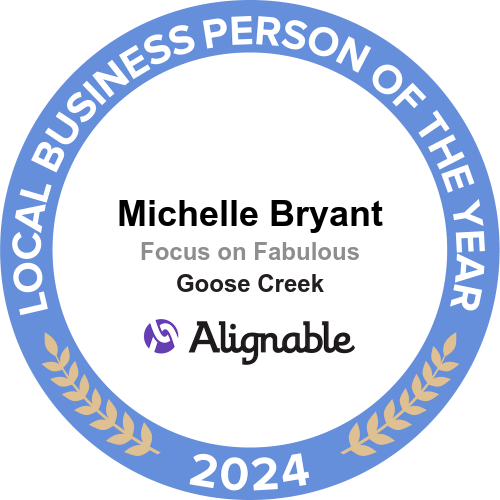
In meeting with some friends, the other day we chatted like most, about what is going on in our world, about what some are choosing to call the “new normal.” We all mentioned friends that have embraced the new work from home regimen and prepare for homeschooling their children as opposed to “risking” them “be exposed” (quotes intended) to something at school. We also knew firsthand of friends that struggle to keep their businesses afloat, food on the table, and are dealing with severe boredom, depression, and even abuse.
Lately, I have noticed a pattern that portrays to mi, a society forced now to stay home more often and be less social. A time where we are gravitating toward the pull of the television, social media, and the advice and opinions of others, no matter our age, race, gender, or financial status. But the truth is, we have been enduring crises throughout history.
Take, for example, the economic boom following the War of 1812 which culminated in America’s first major recession. Or the railroad meltdown of 1857 that derailed the nation’s railroads and banks on the eve of the Civil War. New York banks suspended operations and banks across the country followed suit. Thousands of businesses failed, including three-fourths of all railroads which was followed by the bank collapse of 1873 causing unemployment to reach an estimated 14% as hordes of men wandered the country looking for work. Hundreds of wagons headed north; the roads east and west were carrying lines of families traveling in the weathered elements, looking for work. To them the country was ruined, the whole world was ruined; nothing like this had ever happened before. There was no hope, but in their fight, everyone felt the courage of despair. In 1907 the Knickerbocker Trust Company in New York went bust which avertedly caused a collapse of the banking system. Ultimately leading to the creation of the Federal Reserve six years later.
In 1920 the shift to peacetime production after World War I, along with the Federal Reserve Board’s raised interest rates to record high levels trying to curb postwar inflation. This act resulted in the most abrupt price decline in U.S. history causing a severe recession with the biggest drop being in farm prices. Overall business activity decreased by nearly one third and an estimated 4 million people were out of work.
This led us to the stock market crash of 1929 when the values of stocks plummeted even though the press insisted nothing was askew and people should have faith in their economy. Although the stock market regained more than half its losses by the mid-1930s, a general economic downturn still forced hundreds of thousands of farmers into bankruptcy.
During those times, we the people did not receive our news 24 hours a day seven days a week with updates every few minutes. Yet those before us endured those trials and made it through.
The ’60s were a decade once again dominated by war. The Vietnam War. Although not a world war the effects were still felt throughout the world. It was also the start of showing how the people can affect politics through the power of “peaceful” demonstrations, students were the driving force because with education came empowerment and with empowerment came a voice. And in the 1960s students learned how to use that voice and continued until the fall of Saigon in 1975. As well, the 60’s brought us the Bay of Pigs invasion on Cuba, the assignation of our President, and we observed as Martin Luther King Jr. advocated racial harmony with an estimated number of participants including about 20% white and other ethnic groups and varied from 200,000 (police) to over 300,000 (leaders of the march). This and others like it ultimately contributed to the signing of Voting Rights Act of 1965 as well as the Civil Rights Act signed into law by President Lyndon B. Johnson which aimed as a landmark civil right and labor law that outlawed discrimination based on race, color, religion, sex, or national origin, to overcome legal barriers at the state and local levels preventing African Americans from exercising their right to vote.
By the mid-1970s 44% of married women were now working outside the home as the labor force participation rate of women increased throughout the 1960s, 1970s, and 1980s, and peaked at 60.0 percent in 1999. Over these four decades, the women’s labor force participation rate increased even during several economic downturns.
As we examine the account of trials and triumphs through the history of our country, our world and our surroundings we continue with the hikes of 1980 when with the wake of the 1979 Iranian Revolution the increase in the price of oil capped a decade of inflation and resulted in a national energy crisis. As well as the $1 billion dollar government bailout of Chrysler Corporation forcing interest rates at a record 21.5% by the end of the year, sending car sales and home building to a nosedive. Farmers circled the Federal Reserve headquarters on their tractors. Unemployment peaked at 10.8% in late 1982. Costly unionized manufacturing workers found themselves displaced as hundreds of factories closed and later relocated to non-union states or overseas.
By 1991 war was again on the forefront of our minds as we entered the Gulf War (Operation Desert Storm), a terrorist bomb exploded in a parking garage in New York City at the World Trade Center leaving a crater 60 feet wide and causing the collapse of several steel-reinforced concrete floors. Although at the time, the terrorist bomb failed to critically damage the main structure of the skyscrapers, six people were killed and more than 1,000 were injured.
As the years and generations before us, the new millennium has not been without its own struggles beginning with the terrorist plane crashes into the twin towers of the World Trade Center in New York City, and the Pentagon in Washington, D.C. Leaving a death toll of over 2,900 lives lost in the attacks. As well, we have stood strong and learned how to survive during the spike in food prices which dramatically increased in 2007. And who can forget the subprime mortgage crisis? A nationwide financial calamity that contributed to the U.S. recession for nearly two years and was triggered by a large decline in home prices after the collapse of a housing bubble and lead to mortgage delinquencies, foreclosures. Or the stock market plunge of 2008 that was felt around the world and signaled the start of the Great Recession.
The 21st Century has brought us countless school shootings, the worst Ebola epidemic in recorded history, ISIS, and a local Charleston church mass shooting in which nine African Americans were killed during a Bible study. We have been privy to the tensions between North Korea and are continually exposed to the various crisis of sexual abuse, devastating natural disasters, rallies, protests, and more. I am confident you can recall some historical moments that are filled with not only battles but courage, wars and peace, hate and love.
The point of this history lesson is this. As I was sitting with my friends chatting about what is going on in our world, about what some are choosing to call the “new normal it occurred to me that there has always been something. Something to fear, something to hate, something to worry over. But I want to take time to stop; to write my own headline. Because all this talk, all this hate, worry, and fear causes mi to lose my way, my will, my shine. I choose to remember Vietnam as a war my uncle served in and although on U.S. soil he never really made it home in one piece yet over a cold beer at the VFW would share stories about Jesus to other veterans. I choose to not view the world through headlines but rather through the people that surround mi. I choose to not get into the black, white, democrat or republican, gay or straight, masks or no masks debate but to take every moment as a gift and see every person as a human being. I choose to write my headlines about the black gentleman who stopped to help an overweight white lady with her car and told her she was beautiful, the woman who struggled with anxiety and in turn chooses to make masks rather than fall into depression, to the children and grandchildren who take time from their busy lives to check on family members who are older or live alone. The woman who picks up toilet paper, disinfectant or sanitizer for a friend who has not been able to find some. These are the headlines upon which I choose to fill the precious moments of my day and my life.
Girl, it’s time to focus on the sparkle. The world around us is always going to offer up challenges to us but we are strong. We have endured much before. We come from a long line of go-getters, over comers, and achievers. We can write a new chapter in the story of our life for this day, this moment is one we will never get again. Won’t you join mi? We can make our own history. We can choose to see the good, focus on the blessings and little nuggets of unexpected kindness, and use our new headline to spread the light to our little corner of the world.
© c. michelle bryant
Michelle Bryant is an entrepreneur, nationally acclaimed award-winning artist, inspirational speaker, self-published author of seven books available at most online retailers, a multi-award winning, published photographer whose work is nationally used for worldwide marketing campaigns and featured on various items including but not limited to apparel. She shines her light and speaks from her heart in an encouraging and transparent manner and offers a message of hope, healing, and victory to any who encounters her or her works.






Recent Comments